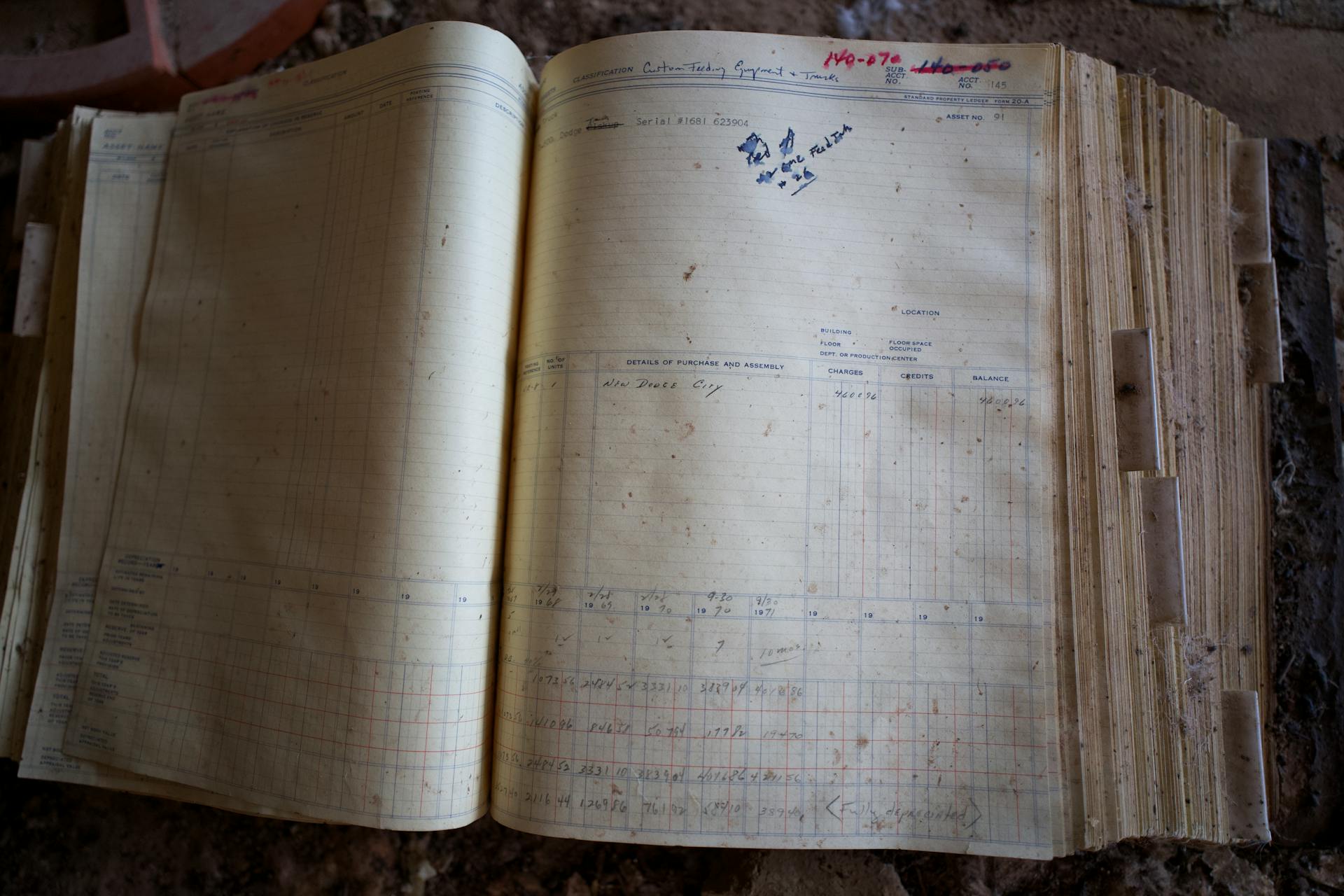
The risk selection and classification process is known as insurance underwriting. This process is crucial in determining which risks to accept and at what price.
Insurance underwriting involves evaluating the likelihood and potential cost of a claim. This is done by analyzing various factors such as the applicant's medical history, lifestyle, and financial situation.
The goal of underwriting is to assess the level of risk associated with a particular policyholder. This helps insurance companies to determine the premium that should be charged.
Insurance companies use a combination of data and expert judgment to make underwriting decisions.
Additional reading: Underwriting
What Is Insurance Underwriting?
Insurance underwriting is the process of evaluating an application for health insurance coverage by analyzing the applicant's medical history to determine the specific risk they pose to the insurance company.
Medical underwriting is a complex process due to various policies and federal and state regulations. In other kinds of insurance, coverage may be denied if the applicant poses too high of a risk, but federal regulations prohibit private insurers from denying health insurance coverage to applicants for any reason.
Discover more: What Is Adverse Selection Health Insurance
Insurance companies need to know the likelihood that underwriting a new policy will be profitable, so they examine various factors to determine the insurance risk class of an applicant.
An insurance risk class is a group of individuals or companies with similar characteristics used to determine the risk associated with underwriting a new policy and the premium that should be charged for coverage.
The underwriting process involves obtaining the applicant's medical information via a health questionnaire, analyzing the questionnaire to determine the amount of risk, and sometimes requiring medical records from the applicant.
Here are the basic requirements for a successful underwriting process:
- Personal Health Questionnaire: Provides the insurance company with basic health information on the applicant.
- Attending Physician Statement (APS): This is only necessary if there are any major concerns from the initial questionnaire.
- Prescription evaluations: The underwriter should analyze the applicant's prescriptions from the past few years.
Risk classification and underwriting are crucial for insurance companies to determine the risk associated with underwriting a new policy and the premium that should be charged for coverage.
You might enjoy: Underwriting Health Insurance
Risk Classification and Underwriting
The risk classification and underwriting process is a crucial step in determining the likelihood of a policyholder making claims and the associated costs. Underwriters use information to classify people into certain risk groups based on their medical history and levels of risk.
These groups form because individuals with similar characteristics tend to have similar risk profiles. For example, a high-cost applicant may desire a low deductible with minimal out-of-pocket costs, which can be considered an adverse selection.
The underwriting process involves analyzing a personal health questionnaire, attending physician statement, and prescription evaluations to determine the applicant's risk level. This process is essential in preventing the insurer from becoming insolvent and ensuring it has the ability to pay policyholder claims.
Insurance risk classes are groups of individuals or companies with similar characteristics, used to determine the risk associated with underwriting a new policy and the premium that should be charged for coverage. Determining the insurance risk class is a primary component of an insurance company's underwriting process.
Here are the basic requirements for the underwriting process:
- Personal Health Questionnaire: Provides the insurance company with basic health information on the applicant.
- Attending Physician Statement (APS): This is only necessary if there are any major concerns from the initial questionnaire.
- Prescription evaluations: The underwriter should analyze the applicant's prescriptions from the past few years.
The insurance risk class allows insurance companies to determine the amount of coverage needed, as well as how much that coverage should cost. Risk classifications are most commonly applied when underwriting life insurance policies.
Insurance Risk Classes
Insurance risk classes are groups of individuals or companies with similar characteristics that determine the risk associated with underwriting a new policy and the premium that should be charged for coverage.
Determining the insurance risk class is a primary component of an insurance company's underwriting process.
Insurance companies examine factors such as the age of the vehicle, the age of the driver, the driver's history, the amount of coverage requested, and the area in which the vehicle is operated to create a profile of a specific type of driver.
These factors help actuaries determine how drivers in a particular profile act, which informs the insurance risk class.
Risk classifications are most commonly applied when underwriting life insurance policies.
Insurance companies need to know the likelihood that underwriting a new policy will be a profitable endeavor, as taking on a new policy that creates thousands of dollars in claims is not a good idea.
Related reading: Age at Risk
The insurance risk class allows insurance companies to determine the amount of coverage needed and how much that coverage should cost.
Insurance tech is used to complete the evaluation of risk classification in the voluntary individual health insurance market.
Underwriters use the information to classify people into certain risk groups based on their medical history and levels of risk.
Background and Current Practices
Risk classification has been a fundamental part of actuarial practice since the beginning of the profession, dating back to the nineteenth century.
The Society of Actuaries published Selection of Risks by Pearce Shepherd and Andrew Webster in 1957, which educated several generations of actuaries and remains a useful reference.
Risk classification is used to treat participants with similar risk characteristics in a consistent manner, to permit economic incentives to operate, and to protect the soundness of the system.
A multitude of risk classification systems have been designed, put into use, and modified over the years, reflecting advances in medical science, economics, and actuarial science.
The American Academy of Actuaries published the Risk Classification Statement of Principles in 1980, which has enjoyed widespread acceptance in the actuarial profession.
Background
Risk classification has been a fundamental part of actuarial practice since the profession's beginning. It's hard to believe that some companies still struggle with this concept.
The failure of nineteenth-century assessment societies, where life insurance was provided at rates that disregarded age, is a stark reminder of the importance of risk classification. These societies failed to adhere to actuarial principles, resulting in financial distress and inequity.
Adverse selection can result from the design of the classification system or externally mandated constraints on risk classification. For instance, if an insurer chooses not to screen for a specific risk characteristic, individuals with that characteristic may apply for coverage in greater numbers, leading to increased overall costs.
Risk classification is used to treat participants with similar risk characteristics in a consistent manner. This helps to ensure that economic incentives operate and encourage widespread availability of coverage.
The Society of Actuaries published Selection of Risks in 1957, which educated several generations of actuaries and remains a useful reference. This publication highlighted the importance of risk classification in actuarial practice.
The American Academy of Actuaries published the Risk Classification Statement of Principles in 1980, which has been widely accepted in the actuarial profession. This statement of principles has had a significant impact on the way actuaries approach risk classification.
Worth a look: Risk Appetite Statements Examples
Current Practices
Risk classification systems have evolved significantly over the years, with advances in medical science, economics, and actuarial science leading to continued evolution.
Actuaries must stay up-to-date with emerging and current practices, which can vary significantly by area of practice. For example, the risk classes for voluntary life insurance may be subdivided to reflect an applicant's state of health, smoking habits, and occupation.
Innovations in risk classification systems can be contentious, and the potential use of genetic tests to classify risks for life and health insurance is a current example. This has led to controversy and, in some cases, legislation or regulation.
The use of postal codes has been outlawed for some types of coverage due to controversy, and the legal test for risk classification has remained largely unchanged for several decades. Risk classification is allowed as long as it is based on sound actuarial principles and related to actual or reasonably anticipated experience.
Actuaries working in the public policy arena may face dilemmas when political considerations contradict sound actuarial practices. In such situations, it's essential to have the benefit of professional actuarial advice.
A fresh viewpoint: Life Insurance Credit Score
Key Concepts
Insurance companies use a system to categorize people into groups based on their characteristics, which helps them estimate the likelihood of a claim being filed. This process is known as risk selection and classification.
An insurance risk class is a way for insurers to underwrite policies based on one's belonging to a particular risk group. People in each risk group will generally share similar characteristics.
Riskier risk groups will pay higher premiums. For example, people who are sick, older, or have a poor driving record will pay more.
Insurance companies use these risk groups to determine how much to charge for a policy. By grouping people with similar characteristics, insurers can better estimate the chances of a claim being filed.
Here's a breakdown of the characteristics that can affect your insurance risk group:
- Sickness or medical conditions
- Age
- Poor driving record
Sources
- https://lewisellis.com/industries/health-care-health-insurance/understanding-health-insurance-underwriting/
- https://pmc.ncbi.nlm.nih.gov/articles/PMC3863847/
- https://www.studystack.com/flashcard-3205557
- https://www.investopedia.com/terms/i/insurance-risk-class.asp
- http://www.actuarialstandardsboard.org/asops/risk-classification-practice-areas/
Featured Images: pexels.com


